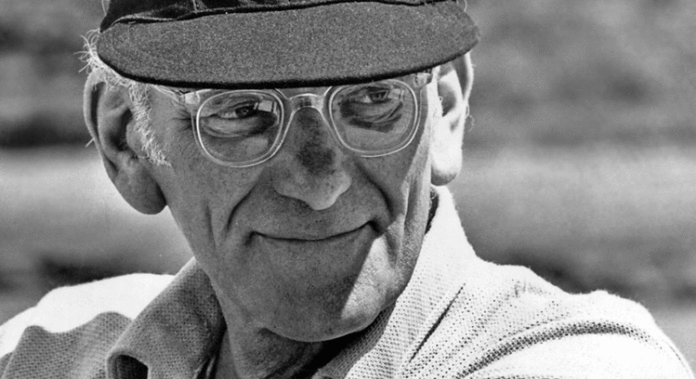
THIS SUNDAY sees 50 years to the day when a small yacht called Gypsy Moth IV arrived back into Plymouth after almost exactly nine months at sea. The lone occupant was someone whose name has now become synonymous with sailing and it’s his life and the at the time unique achievement that we acknowledge today.
Sir Francis Charles Chichester KBE (17 September 1901 – 26 August 1972), was both a pioneering aviator and sailor. Born in Barnstaple, Devon, at the age of six he was sent as a boarder to The Old Ride Preparatory School for boys and then attended Marlborough College during the First World War. At the age of eighteen, he emigrated to New Zealand, where in ten years he built up a prosperous business in forestry, mining and property development, only to suffer severe losses in the Great Depression.
After returning to England in 1929 to visit his family, Chichester took flying lessons at Brooklands, Surrey, and qualified as a pilot. He then took delivery of a De Havilland Gipsy Moth aircraft, which he intended to fly to New Zealand, hoping to break Bert Hinkler’s record solo flight back to Australia on the way. While mechanical problems meant that the record eluded him, he completed the trip in 41 days. The aircraft was then shipped to New Zealand.
Finding that he was unable to carry enough fuel to cross the Tasman Sea directly, Chichester had his Gipsy Moth fitted with floats borrowed from the New Zealand Permanent Air Force, and went on to make the first solo flight across the Tasman Sea from East to West (New Zealand to Australia). He was the first to land an aircraft at Norfolk Island and Lord Howe Island.
With navigation and exploration in his blood, Chichester then decided to circumnavigate the world solo; he made it to Japan but at Katsuura in the Chiba region he collided with an overhead cable, sustaining serious injuries.
Unable to join the Royal Air Force at the outbreak of the Second World War due to age and eyesight, he was not granted a commission until 14 March 1941 when he joined the Royal Air Force Volunteer Reserve for the duration of hostilities. His civil occupation was listed as Air Navigation Specialist. His first posting was to the Air Ministry in the Navigation section of the Directorate of Air Member Training, where he served until August 1942. In July 1943 he was sent to the Empire Central Flying School where he instructed in navigation until released in September 1945. He wrote the navigation manual that allowed the pilots of single-handed fighter aircraft to navigate across Europe and back using kneeboard navigation similar to that which he had used in the Pacific.
At the end of the war, he stayed in the United Kingdom. He purchased 15,000 surplus Air Ministry maps, initially pasting them onto boards and making jigsaw puzzles out of them, and later founded his own successful map-making company.
In 1958, Chichester was diagnosed with terminal lung cancer although it has since been believed that this was a misdiagnosis. His wife Sheila put him on a strict vegetarian diet (now considered to be a macrobiotic diet) and his cancer went into remission. Not to be beaten, Chichester then turned to long-distance yachting.
In 1960, he entered and won the first single-handed transatlantic yacht race, which had been founded by ‘Blondie’ Hasler, in the yacht Gipsy Moth III. He came second in the second race four years later.
On 27 August 1966 Chichester sailed his ketch Gipsy Moth IV from Plymouth in the United Kingdom and returned there after 226 days of sailing on 28 May 1967, having circumnavigated the globe, with one stop (in Sydney). By doing so, he became the first person to achieve a true circumnavigation of the world solo from West to East via the great Capes.
The voyage was also a race against the clock, as Chichester wanted to better the typical times achieved by the fastest fully crewed clipper ships during the heyday of commercial sail in the 19th century (the first recorded solo circumnavigation of the globe was achieved by Joshua Slocum in 1898 but it took him three years with numerous stops – Slocum also took up the harder challenge of sailing east to west, against the prevailing wind).
In July 1967, a few weeks after his solo circumnavigation, Chichester was knighted by Queen Elizabeth II for becoming the first person to sail single-handed around the world by the clipper route, and the fastest circumnavigator, in nine months and one day overall in 1966-67. His citation read: “for individual achievement and sustained endeavour in the navigation and seamanship of small craft”. For the ceremony, the Queen used the sword used by her predecessor Queen Elizabeth I to knight the adventurer Sir Francis Drake, the first Englishman with his crew to complete a circumnavigation. His sailing partner for his historic voyage, Gipsy Moth IV was preserved alongside the Cutty Sark at Greenwich.
Chichester was also honoured in 1967 by a newly issued 1/9d postage stamp, which showed him aboard Gipsy Moth IV. This went against an unwritten tradition of the General Post Office, because Chichester was neither a member of the royal family nor dead when the stamp was issued.
Sir Francis Chichester died of cancer in Plymouth, Devon, on 26 August 1972, and was buried in the church of his ancestors, St Peter’s Church, Shirwell, near Barnstaple.
A memorial plaque to Chichester was unveiled at the family home at 9 St James’s Place, SW1 in September 1993.








